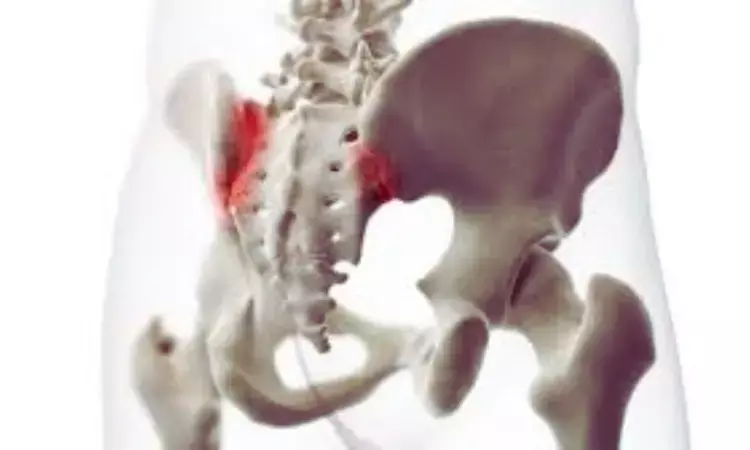- Home
- Medical news & Guidelines
- Anesthesiology
- Cardiology and CTVS
- Critical Care
- Dentistry
- Dermatology
- Diabetes and Endocrinology
- ENT
- Gastroenterology
- Medicine
- Nephrology
- Neurology
- Obstretics-Gynaecology
- Oncology
- Ophthalmology
- Orthopaedics
- Pediatrics-Neonatology
- Psychiatry
- Pulmonology
- Radiology
- Surgery
- Urology
- Laboratory Medicine
- Diet
- Nursing
- Paramedical
- Physiotherapy
- Health news
- Fact Check
- Bone Health Fact Check
- Brain Health Fact Check
- Cancer Related Fact Check
- Child Care Fact Check
- Dental and oral health fact check
- Diabetes and metabolic health fact check
- Diet and Nutrition Fact Check
- Eye and ENT Care Fact Check
- Fitness fact check
- Gut health fact check
- Heart health fact check
- Kidney health fact check
- Medical education fact check
- Men's health fact check
- Respiratory fact check
- Skin and hair care fact check
- Vaccine and Immunization fact check
- Women's health fact check
- AYUSH
- State News
- Andaman and Nicobar Islands
- Andhra Pradesh
- Arunachal Pradesh
- Assam
- Bihar
- Chandigarh
- Chattisgarh
- Dadra and Nagar Haveli
- Daman and Diu
- Delhi
- Goa
- Gujarat
- Haryana
- Himachal Pradesh
- Jammu & Kashmir
- Jharkhand
- Karnataka
- Kerala
- Ladakh
- Lakshadweep
- Madhya Pradesh
- Maharashtra
- Manipur
- Meghalaya
- Mizoram
- Nagaland
- Odisha
- Puducherry
- Punjab
- Rajasthan
- Sikkim
- Tamil Nadu
- Telangana
- Tripura
- Uttar Pradesh
- Uttrakhand
- West Bengal
- Medical Education
- Industry
New navigation techniques demonstrate higher accuracy, lower fluoroscopic frequency and time than 2D fluoroscopy: Study

Switzerland: A systematic review and meta-analysis have highlighted the advantages of advanced navigation techniques in percutaneous sacroiliac (SI) screw fixation, demonstrating improved accuracy and reduced fluoroscopic exposure compared to conventional 2D fluoroscopy. The findings, published in BMC Surgery, suggest that newer technologies, including 3D CT navigation and robotic-assisted systems, may offer even greater precision in this procedure.
The researchers note that percutaneous sacroiliac screw fixation is becoming a preferred approach for stabilizing pelvic fragility fractures in elderly patients, helping to preserve mobility and alleviate pain. Traditionally, this procedure has been performed using 2D fluoroscopy. However, newer navigation-assisted techniques have been introduced to potentially enhance precision and safety. The extent to which these advanced methods improve accuracy, reduce radiation exposure, and minimize complications compared to conventional 2D fluoroscopy remains uncertain.
Against the above background, R. A. Haveman, Faculty of Health Sciences and Medicine, University of Lucerne, Lucerne, Switzerland, and colleagues aimed to compare percutaneous sacroiliac screw fixation performed with traditional 2D fluoroscopy (2DF) and newer navigation techniques (NNT).
For this purpose, the researchers conducted a systematic review and meta-analysis, searching PubMed, CENTRAL, and Embase for randomized controlled trials and observational studies that compared new navigation techniques with 2D fluoroscopy for percutaneous sacroiliac screw fixation. They pooled effect estimates using a random-effects model and presented the findings as odds ratio, mean difference, and standardized mean difference with a 95% confidence interval.
Key Findings:
- The analysis included 19 studies, with 642 patients in the 2D fluoroscopy group and 663 patients in the new navigation group.
- Accuracy was significantly higher in the new navigation group (OR 2.44), particularly with O-Arm, 3D CT, and robotic navigation.
- On average, accuracy was 82% in the 2D fluoroscopy group and 92% in the new navigation group, showing a significant improvement.
- Fluoroscopy time was significantly reduced in the new navigation group (MD 71.89 seconds).
- The frequency of fluoroscopic imaging was also lower in the new navigation group (MD 17.22 images).
- Complications were acceptably low in both groups, though they were poorly reported in the included studies.
This meta-analysis demonstrated that navigated percutaneous sacroiliac screw fixation offers higher accuracy and reduces fluoroscopic frequency and time compared to conventional 2D fluoroscopy. Among the new navigation techniques, 3D CT and robotic navigation showed even greater advantages. While complication rates remained acceptably low in both groups, data were limited. The authors highlight the need for future studies to determine the most effective navigation technique and assess whether the benefits justify the implementation costs.
Reference:
Haveman, R.A., Buchmann, L., Haefeli, P.C. et al. Accuracy in navigated percutaneous sacroiliac screw fixation: a systematic review and meta-analysis. BMC Surg 25, 89 (2025). https://doi.org/10.1186/s12893-025-02813-z
Dr Kamal Kant Kohli-MBBS, DTCD- a chest specialist with more than 30 years of practice and a flair for writing clinical articles, Dr Kamal Kant Kohli joined Medical Dialogues as a Chief Editor of Medical News. Besides writing articles, as an editor, he proofreads and verifies all the medical content published on Medical Dialogues including those coming from journals, studies,medical conferences,guidelines etc. Email: drkohli@medicaldialogues.in. Contact no. 011-43720751


